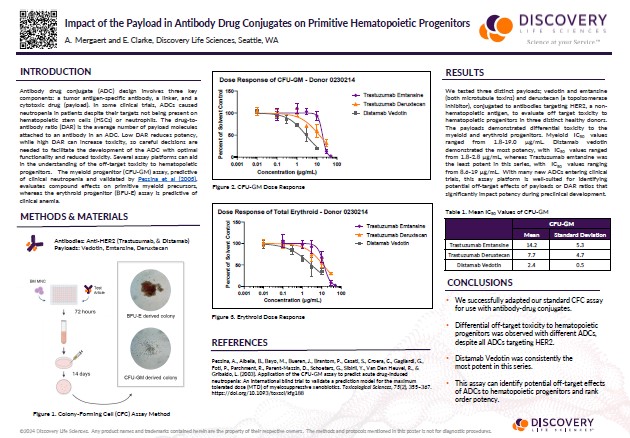Antibody drug conjugate (ADC) design involves three key components: a tumor antigen-specific antibody, a linker, and a cytotoxic drug (payload). In some clinical trials, ADCs caused neutropenia in patients despite their targets not being present on hematopoietic stem cells (HSCs) or neutrophils. The drug-to antibody ratio (DAR) is the average number of payload molecules attached to an antibody in an ADC. Low DAR reduces potency, while high DAR can increase toxicity, so careful decisions are needed to facilitate the development of the ADC with optimal functionality and reduced toxicity.

